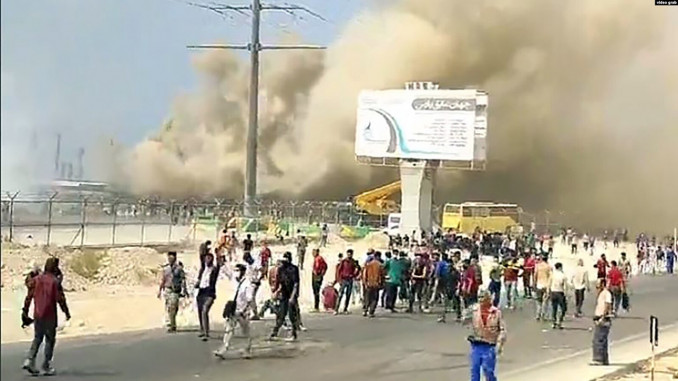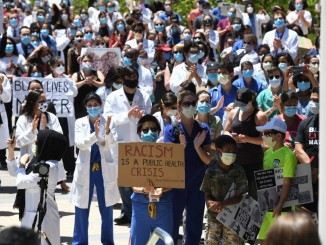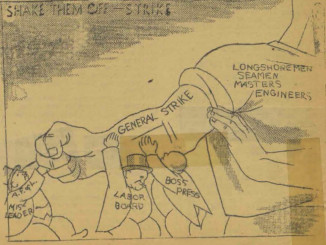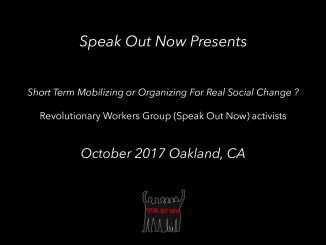
Last month, the Iranian morality police murdered 22-year old Mahsa Amini for the crime of not wearing her hijab properly. Since then, mass protests have taken place throughout the country against this outrage without signs of slowing down. While young people and women have been incredibly vocal throughout, we’re now seeing the struggle move through the population, notably to workers in the energy sector.
Over the past weeks, President Ebrahim Raisi has been forced to publicly acknowledge that he was “saddened” by the “tragic” death of Mahsa Amini but has stopped short of condemning the morality police for responsibility for her death. In addition, both Ebrahim Raisi and the Ayatollah Ali Khameni have doubled down on conspiratorial claims that the protests have been stirred up by countries like the United States and Israel to incite chaos within the country. While the United States and Israel certainly would not be sad to see the Iranian regime collapse, these unfounded allegations allow the political leadership of Iran to deflect responsibility for the current political crisis and to trivialize people’s righteous anger towards the regime. For those of us in the West, we must unequivocally stand with the Iranian people’s uprising, against the Islamic Republic regime AND any intervention supposedly done on our behalf by the United States.
Rather than slowing down, the bold actions of Iranian people have become more determined, despite some 201 protesters having reportedly lost their lives, including children, according to human rights organizations. On top of this more than one thousand protesters have reportedly been arrested. Suspiciously, the notoriously brutal Evin prison in Tehran that holds political prisoners recently caught on fire, killing four people and injuring 61. According to a military official, the average age of a protester who has been arrested is 15 years old, showing the explosive energy of the youth.
Not only young people but women have especially played a leadership leadership role in the movement. For example, when President Ebrahim Raisi attempted to speak and address a female university, Al-Zahra, the students shut him down, chanting, “Raisi get lost!” and “Mullahs get lost!” A similar action took place at a high school where female students shut down the leader of a paramilitary organization, chanting, “Basiji get lost!” In schools across the country, female students have shared videos of themselves collectively taking off their hijabs and chanting anti-government slogans.
The struggle has also been deeply shaped by the struggle for national liberation of the Kurdish people. The uprisings have been the most intense in the northwest of the country, home of over 10 million Kurdish people. Mahsa Amini was a Kurd from that region of Iran. Like elsewhere in Turkey, Syria, and Iraq, the Kurdish people are an oppressed national minority that often have their basic rights deprived by the Iranian regime. This oppression by various governments has led to a long history of struggle for national self-determination by Kurdish people across the borders. It is not an accident that the popular slogan in demonstrations across the country, “Women, Life, Freedom,” has its origin in the historical Kurdish struggle for liberation. Currently, cities in the Kurdish regions in northwest Iran look like war zones, with military personnel deployed in the streets to repress the population.
To provide further background, working and poor people in Iran face an inflation rate of over 50%, which is unimaginable to many of us. On top of this, wage theft by employers, public and private, is commonplace. It should be no wonder that there is a deep anger of working class people towards the oppressive society and all of its facets, from the so-called morality police to the struggle to earn a living with dignity.
Thus, it is no wonder that the fight has since reached a new level, spreading to the workers in the energy sector who have recently gone on strike in protest of the government’s repression. On October 10, some 4,000 petrochemical workers walked off of the job in Asalouyeh at the Bushehr Petrochemical, Damavand Petrochemical, and Hengam Petrochemical facilities in an indefinite strike to support the struggle. To prevent scabs from possibly resuming operations, the strikers set up barricades of rocks and burning tires to obstruct the entrance to the facilities.
The strike wave has since spread to other parts of the country, such as the petrochemical and oil workers in Kangan and Abadan. These strikes are being carried out primarily by casual laborers on temporary contracts. Since then, there have been calls for a general strike coming from workers in the energy sector as well as workers at the Haft Tappeh Sugar Cane Company, who have a very important history of militant struggle over recent years. The call for a general strike has been gaining momentum. All across the country, brave young people have been putting up posters on the walls and car windshields calling for a general strike. Bazaars, or large markets, have been effectively shut down in city after city.
One of the chants of the workers at the petrochemical facilities has been, “Don’t Be Afraid! We’re All Together!” Another chant has been, “Don’t Call It a Protest, Call It a Revolution!” The workers have a historical memory, but does the regime?
If the Iranian regime has any historical memory, it would realize how explosive the oil workers’ strike could potentially be. The oil workers are the same social force that played a critical role in overthrowing the previous regime, that of the Shah, in 1979, leading to the creation of the Islamic Republic. This current struggle is potentially threatening the existence of the very same Islamic Republic. Whether or not this will actually take place is to be seen. But what is clear is that the industrial working class has the power to be the gravediggers of any oppressive social order – whether in Iran or anywhere else in the world.




